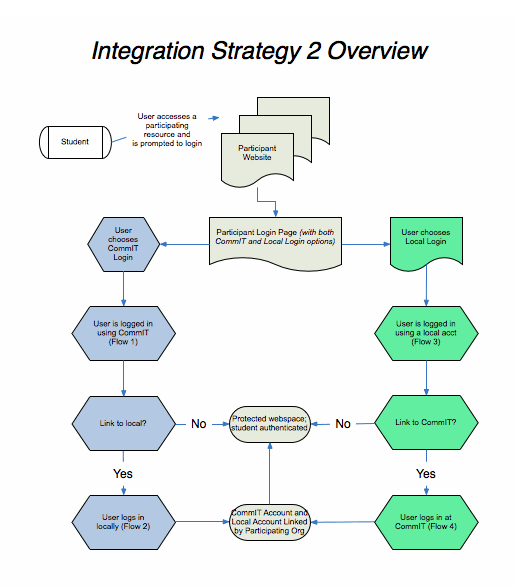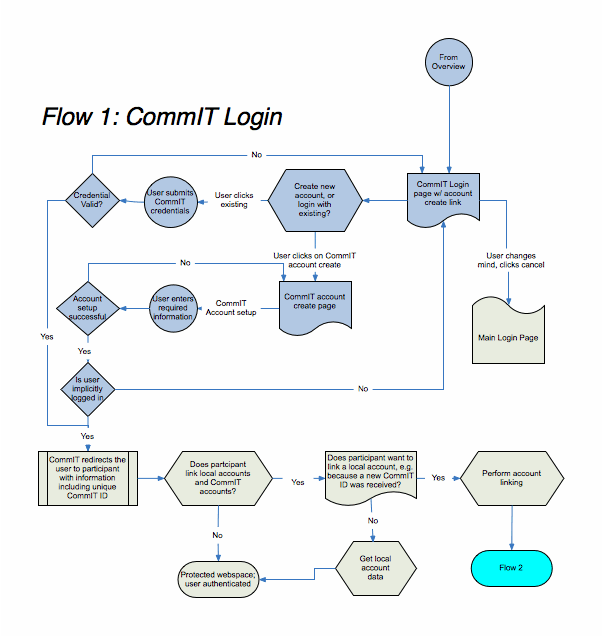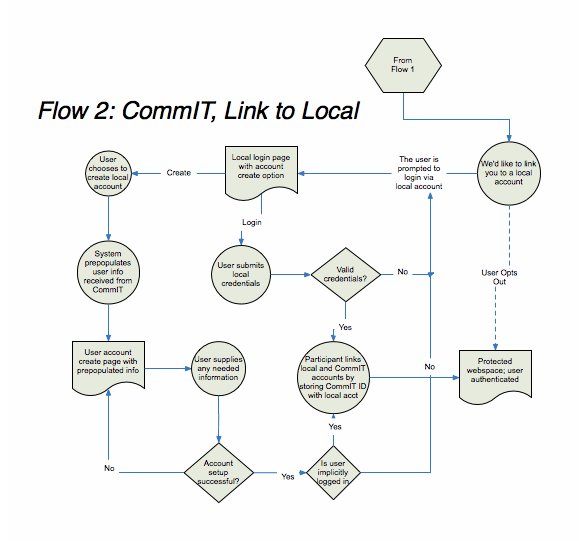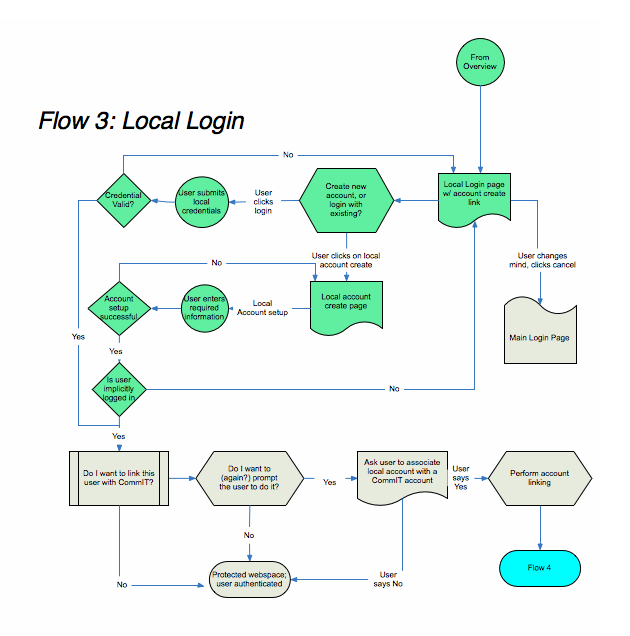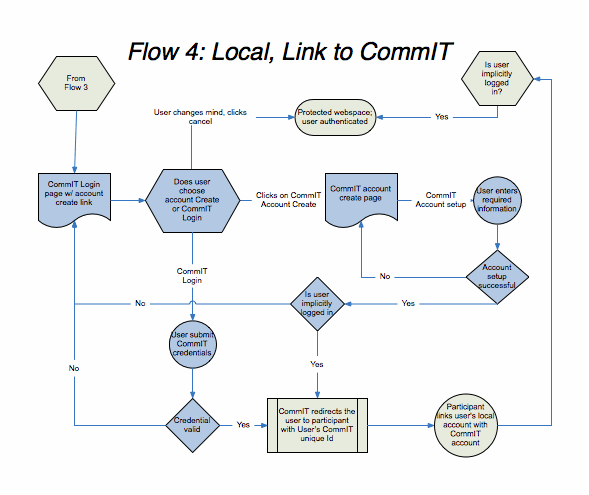...
Integration Strategy 2 allows for the use of local accounts alongside CommIT Collaborative accounts. This may be done as a permanent integration approach, or it may be useful as a transition mechanism towards an end state of Integration Strategy 1, where only CommIT accounts are used at a given service.
The There are countless ways to thread together local accounts and CommIT accounts into an identity fabric. This integration strategy strikes a balance between accommodating as many different deployer needs as possible and presenting a cohesive, understandable login experience to the user. As such, it is a guide and a harmonization point for an anticipated variety of deployer approaches, intended to encourage interoperability and a consistent, learnable user experience. It is not a complete description of everything that is possible.
Deployers are encouraged to think critically about these flows and the needs of their implementation. Some user interactions or options can be reasonably excerpted by an implementer if they are not appropriate for the scenario. Others may be added. Some flows might not be implemented at all if they create an end state that is undesirable to the integrator.
...
Each scenario has a matching story that demonstrates how the flow might be used. There are separate flow diagrams to depict modes of the integrated system, but they compose into a single, unified decision tree. The flow as depicted begins when the user attempts to access a protected service at a participating organization, although it could be invoked at various points on various sites. The flow ends when the user is able to access the desired secured content, or with display of appropriate error and help information when the user is unable to access the resource.
Other flows, such as the aggregation of attributes about a principal from all participants in the CommIT ecosystem at the end stage of the application process, are out of scope for this document, which addresses only authentication.
...
The next time Annie returns to the service, she chooses to login with CommIT. Since she already has an account, she clicks the CommIT button. After successfully authenticating, "ommIT sends back an assertion describing the authentication, the verification level associated with her account, her CommIT identifier, and optionally a set of attributes. The application service optionally loads the local representation of Annie.
Start State*: A user wants to access a service using a CommIT account.
1. The user may or may not have a local account.
2. The user may or may not have a CommIT account.
3. The user may be accessing the participating service's website via her CommIT account for the first time.
Successful End State*: The user has successfully authenticated to and accessed the participating service's website using her CommIT account.
1. The user now certainly has a CommIT account.
2. The user still may or may not have local account.
3. The user has successfully accessed the participating service's website.
4. The participating service has received the user's unique CommIT identifier.
...
Next time Arnie comes back to the testing service, he chooses to authenticate with his local testing service account. He is prompted for authentication by the testing service. His unique CommIT identifier is still associated with his local account, and he is granted access to the service.
Start State*: A user has successfully authenticated to and accessed the participating service's website using her CommIT account. The participating service requires, for its own reasons, a local account that can be linked with the CommIT account.
1. The user may or may not have a local account.
2. The user certainly has a CommIT account.
3. The user may be accessing the participating service's website via his CommIT account for the first time.
Successful End State: The user has successfully authenticated to the participating service using principally a CommIT account and associated a local account with a CommIT identifier.
...
Arnie Applicant wants to login to an application service. The testing service offers to let him login with a local account, or to use an CommIT account. Arnie just wants access to the application; he is not interested in using or learning more about CommIT. He clicks the local login button. After successfully creating a new local account or authenticating with an existing local account, Arnie is granted access to the application.
Start State*: A user wants to access a protected service using a local account.
1. The user may or may not have a local account.
2. The user may or may not have a CommIT account.
Successful End State*: The user has successfully authenticated to and accessed the participating service's website using a local account.
1. The user now certainly has a local account.
2. The user may or may not have a CommIT account.
3. The user has successfully accessed the participating service's website.
...
The next time Annie comes back to the testing service, she chooses to authenticate with her CommIT account. She is redirected back to the CommIT IdP. After successfully authenticating, CommIT sends back an assertion describing the authentication, the verification level associated with her account, her CommIT identifier, and optionally a set of attributes. The testing service associates the CommIT identifier with the local account keyed by her CommIT identifier and grants her access to the application.
Start State*: A user wants to associate a local account with a CommIT account.
1. The user certainly has a local account.
2. The user may or may not have a CommIT account.
3. The user may be accessing the participating service's website via her CommIT account for the first time.
Successful End State*: The user has successfully authenticated to the participating service using principally a local account with an associated CommIT account and identifier.
...
